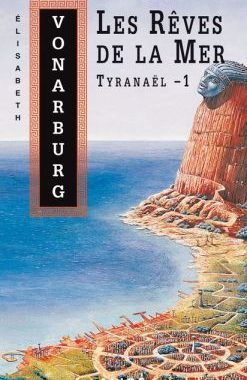 A Natural History of Dragons by Marie Brennan
A Natural History of Dragons by Marie Brennan
My rating: 4 of 5 stars
Why on earth have I not read this series before now? Because anyone who’s checked out my Goodreads shelves or followed my blog knows that I am a huge fan of Elizabeth Peters’ Amelia Peabody series–and when I dived into Book 1 of the Memoirs of Lady Trent, I found a lot of similarity with the Amelias. Basically, A Natural History of Dragons felt to me like what you’d get if you took the Amelias, made them a secondary world fantasy instead of a mystery/adventure series set in our world, and had the heroine passionate about scientific study of dragons instead of Egyptology.
I was already drawn to reading this book for the “heroine wants to do SCIENCE!” angle alone, but once I actually started reading it, the overall Amelia-like flavor appealed to me greatly.
But of course since this is its own series, there will be differences as well. Our heroine, Isabella, starts her story as a young girl instead of the well-established lady of means that Amelia Peabody is at the start of her adventures. Isabella’s attempts to gain her father’s approval in her interest in sparklings leads into her need to find a husband who will do the same, and soon enough she meets and weds Jacob Camherst. All of this will probably feel very familiar to anyone who’s read historical romances with heroines interested in science; the society Isabella grows up in is very akin to what you’ll see in countless Regencies, where a woman must conceal her bluestocking inclinations if she wants to land a husband. Or, as Isabella puts it, her tendency to be an ink-nose.
Fortunately, that part of the story is fairly short. Matters really take wing once Isabella convinces her husband to not only join an expedition to study Vystrani rock-wyrms, but to take her with him as well. And this is where my love of the Amelias really came into play, because here’s a couple interested in science, and going off to have adventures as they do so. Huge fun.
Moreover, with my author hat on, I was rather impressed by the worldbuilding in general. The story is presented as an elderly and now world-famous Isabella telling her memoirs, and so the narrative throws around multiple names of nations, laying down a worldwide scope and the clear expectation that Isabella expects her readers to understand what all these nations are. With those tidbits come all sorts of tasty little details to start sketching in what the reader “should” already know, and which whetted my appetite to visit these other places even as we follow Isabella, Jacob, and the rest of their party off on the adventure in this book. I particularly liked the intriguing hints we receive about the Draconeans, and the ancient history–or is it mythology? Or both?–involved with them.
With my reader hat on, I appreciated not only the Amelia-like flavor of the story, but also the juxtaposition of fantastic creatures and scientific inquiry, in a world on the brink of coming into its modern age. I likewise appreciated that the Isabella telling us her story is cognizant of her younger self’s shortcomings, which encourages me to want to see how the younger Isabella grows and matures.
What else? I liked the explorations of culture clashes between Isabella’s party and the people of the village where they have the bulk of the action, particularly when Isabella deals with Dagmira, the young woman who winds up acting as her maid. And artistically, I very much appreciated the illustrations scattered through the story as well. This made reading the book in digital form a bit tricky, as the paragraphs sometimes wrapped strangely around an illustration. But the pictures were captivating enough that I promptly went out and bought a print copy of both this book and book 2.
Because yeah, I’ll want print copies of these as well as digital. And I’ll be having a lot of fun plowing through the rest of this series. For this opening installment, four stars.


